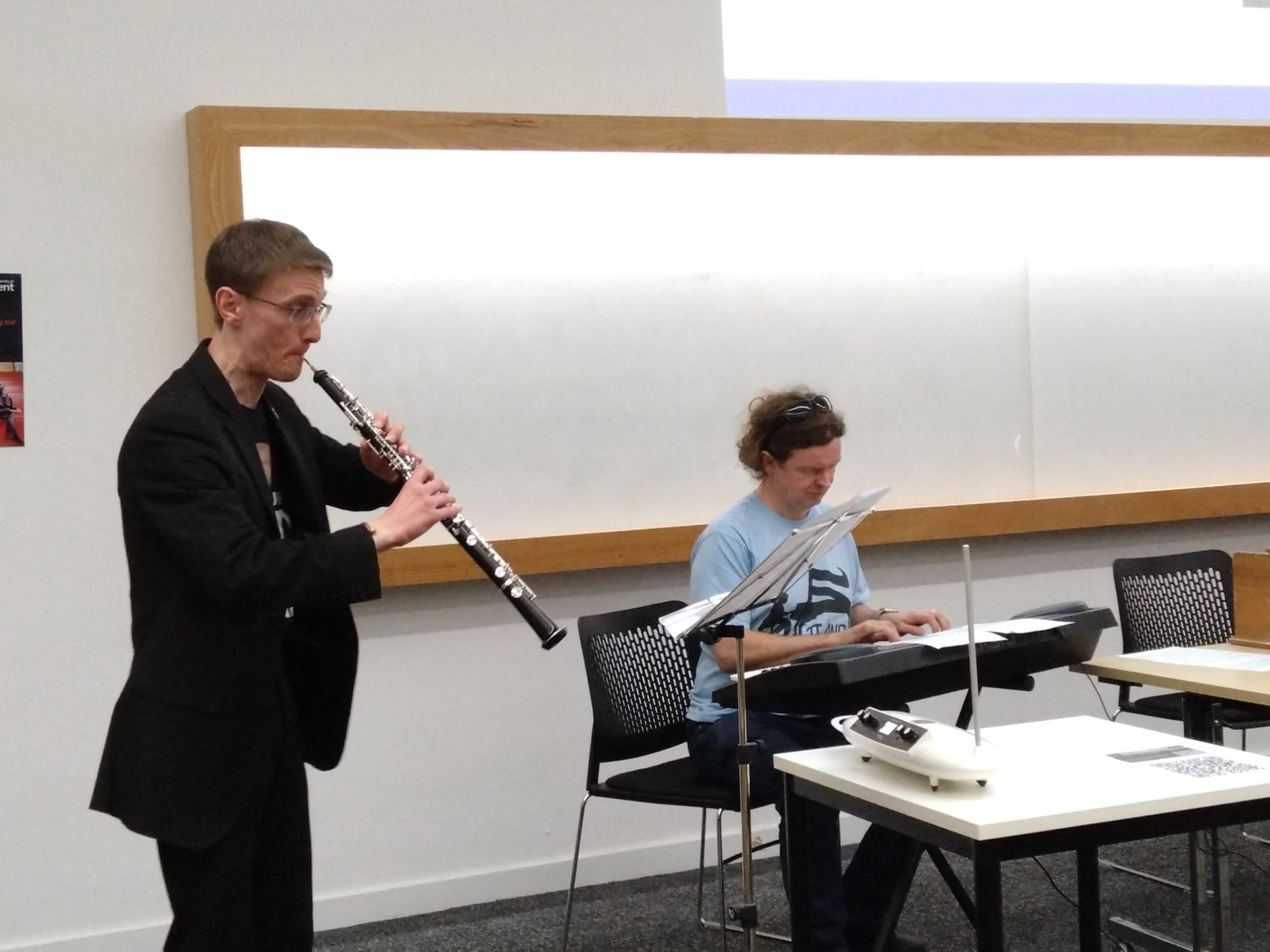
A warm welcome back, and Happy New Year from Kent Physics Centre! The first talk of 2025, beginning the year on the right note, was given by Dr. Christopher Wiley Head of Music and Media at the University of Surrey. Dr. Wiley gave a talk entitled “Music and Space”, combining two areas near and dear to the more than 60 attendees.
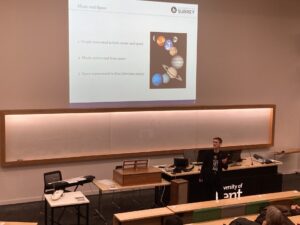
The audience were treated to a tour through the centuries, exploring the human fascination with space, as expressed through music. Long has the vast expanse of space motivated some of the most iconic musical works. In particular, the planets of our solar system inspired both Johannes Kepler and Gustav Holst. The former turning to music to describe their orbits, characterising each eccentric orbit by an appropriately eccentric musical scale. The details of these orbits would be formalised through Kepler’s laws of Planetary motion.
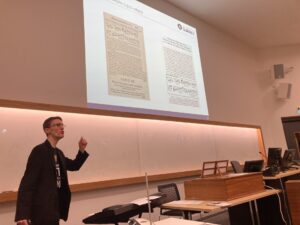
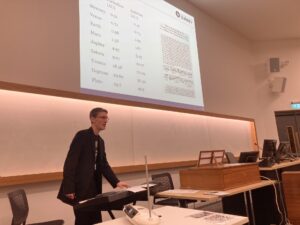
The character of each planet is essential to Holst’s iconic suite “The Planets”, each movement evoking the classical depiction of the planets. Mars, for example, “the bringer of war” features an unnerving 5/4 time signature, in stark contrast to the much more common, and regular, 4/4 signature. This, in combination with inherently militaristic brass sections, creates the instantly recognisable piece we know today.
Holst’s “The Planets” would have had one fewer movement if not for William Herschel, a rare example of a professional musician and part time astronomer. Some may recognise Herschel’s name as he discovered Uranus in 1781, however, fewer may recognise his compositions. This was swiftly rectified by Dr. Wiley who performed Herschel’s “Full organ pieces, first set, No. 4” for the audience.
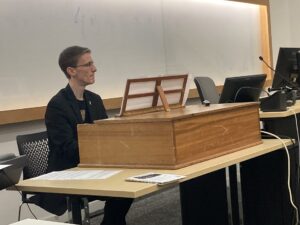
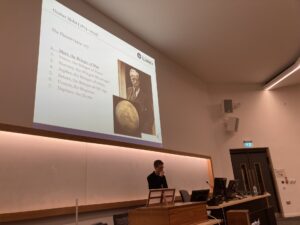
It was not only the terrestrial examples of the links between space and music discussed. There are many wonderful examples of music being sent to and from space. One of the most well known is the golden record aboard the Voyager spacecraft. This 12″ record contains not only photographs of humanity, but also a curated selection of music and sounds from around the world. These two spacecraft, and their music, are over 20 billion kilometres away from Earth. For a comparatively local example, we turn to the spacecraft in Earth’s orbit. Most well known is the international space station, several concerts have been orchestrated. Further, the Polaris Dawn mission, launched in September 2024, played host to a simultaneous performance of “Rey’s Theme”, from “Star Wars: The Force Awakens”, by Astronaut Sarah Gillis. This piece was performed in conjunction with music students from around the world; a musical and technological marvel!
This performance echoes the long fascination with space in popular culture with countless films, TV shows, and games depicting adventures in space. Indeed, it can be argued that none of this media would be half as iconic without their accompanying soundtracks. One immediately thinks of Star Wars’ “Imperial March”, or the themes from Star Trek or Doctor Who. These pieces have an undoubtedly “space-like” sound to them, the reasons for which were concisely elucidated by Dr. Wiley. We hear remnants of Holst’s Mars in the “Imperial March”, with the martial brass sections; the wordless vocalisations in both the Star Trek and Doctor who themes sound decidedly “alien” or otherworldly. Such a discussion of such otherworldly sound would not be complete without mentioning the theremin, which in itself is a remarkable blend of music and physics. In addition to the other instruments in Dr. Wiley’s arsenal, he demonstrated the use of a theremin, and invited any curious audience members to come and try it for themselves.
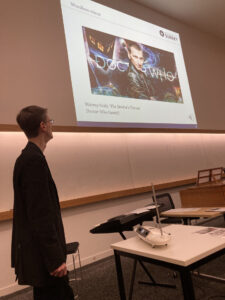
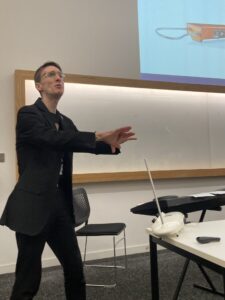
Indeed, it was this part of the talk that really struck a chord with the audience; attendees were eager to offer fond memories and their favourite pieces of space music. Dr. Wiley was glad to share in these stories, and offer his own insights on the music as well.
As one final treat, the talk concluded with another piece of Herschel’s (the third movement of oboe concerto No.2), with Dr. Wiley on the oboe, and the University of Kent’s very own Dr. Sam Carr on the piano.

Kent Physics Centre will return on the 18th of February (at 7pm) with a talk from Dr Nabil Iqbal, of the University of Durham, entitled “The holographic principle: from black holes to the edge of spacetime“.